Bengali vegetable dish- an enigma or a war-ground. As much as we denote Bengalis as a fish-loving community, few India cuisines have as many varieties in vegetable dishes, as we have. When you sit for a Bengali meal, you cannot eat the fish curry before the ‘shukto’ (bitter gourd stew/curry). Well, it’s not that you can’t, rather you would be harshly judged for your priorities. It’s your meal, your choice but be prepared for glaring eyes of traditional Bengalis if you choose to do so. Bengali vegetable dish has different kinds of leafy, non-leafy, green, non-green vegetables. The recipes have been given fancy names such as ‘labra’, ‘ghonto’, ‘chocchori’. It’s a regret that we, the modernists have forgotten the significance and the meaning behind each of these names! Which one is ‘labra’? Which is ‘ghonto’? What is ‘chocchori’? Do we have any idea about what is ‘chhyanchra’? As a child, I used to believe that ‘chhyanchra’ is the food of the unscrupulous, as the name suggests. As an adult, I realized its nutritional value. Come readers, let’s explore these a little more.
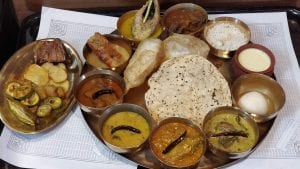
In India and the world Bengalis are popular as ‘fishy folks’, which you might find offensive. Be rest assured, you need not be offended. By ‘fishy folks’ one refers to the Bengalis’ heavy dependency on non-vegetarian Bengali dish. However, I can’t say that the phrase is entirely wrong. I can’t imagine my diet without fish or meat. Well, it’s not that I can’t survive, rather I would say that- I eat anything that moves on the face of this earth. Now, don’t ask me further questions on what falls within the category of “anything that moves”; I would give you that answer in private. While the title of ‘fishy folks’ is not entirely wrong, it is not absolute. Not many cultures have such an expansive list of vegetarian dishes as the Bengalis. French cuisine is a close comparison where different courses are incorporated within a meal.
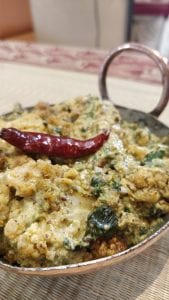
Ghonto and chapor ghonto
Let’s begin our Bengali vegetable discussion with ‘ghonto’. Its speciality is in the way the vegetables are cut. We, the Bengalis are extremely picky about the way vegetables are cut for our curries. You would hardly find a fish curry where the potatoes are cut in cubes or a fish ‘kalia’ (rich gravy) would never have potatoes cut in juliennes whereas for ‘ghonto’ the vegetables are always cut in cubes. The gravy is on the drier side, but not entirely dry. Any vegetable can be used for this recipe-bottle gourd, cabbage, radish. Sometimes you would also see a mix of vegetables in ‘ghonto’.
The vegetables are cut in cubes and tempered with bay leaves and dried red chillies. You have to sauté the vegetables and add salt, chillies, turmeric and your love and anger- mix these properly and add a little water to boil it. The result you get is called ‘ghonto’. In many Bengali families, including mine, you would find a weird recipe which is called ‘chapor ghonto’. What does ‘chapor’ mean? Dry split peas are mashed and slapped (chapor) into the shape of small cutlets and fried. Well, sone families fry it and some don’t. The ‘ghonto’ made with this ‘chapor’ is known as ‘chapor ghonto’. Due to lack of time this recipe is now rarely made. I consider myself fortunate that both my mother and my wife are experts of this recipe. You should try it too. I am sure you would love it.
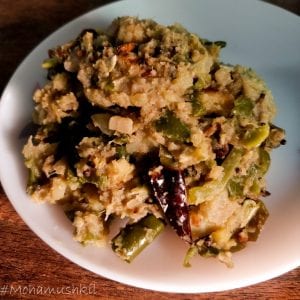
Chocchori
Let us now move onto ‘chocchori’ segment in Bengali vegetable dish. The ‘chocchori’ is indigenous to the gamut of Bengali vegetable dish. Among the ancient, traditional recipes across India, the ‘chocchori’ has always had a place. Undoubtedly, it is a medley of five vegetables. Nonetheless, you would hardly find a Bengali who has not devoured a plate of ‘luchi’ (deep-fried flatbread) with potato-cauliflower fishbone ‘chocchori’ for breakfast. Most of the times the vegetables are cut in long vertical pieces. You can cut the pieces thick or in juliennes. The tempering is mostly kept the same but the variety is in the nature of Bengalis. Fenugreek seeds, nigella, dried red chillies are lightly sautéed in oil for tempering. You can choose to add mustard paste as well.
The real test of the chef is in the type of the ‘chocchori’ gravy. Should it be entirely dry or have some wet gravy? Well, it should be neither dry nor wet, but the right balance of both.

The epoch documentor of Bengali cuisine, Biprodash Mukhpadhyay had published a recipe book, “Pakpronaalee” which contains nearly ten types of ‘chocchori’. These are, cauliflower ‘chocchori’, ‘dnata’ (stem) ‘chocchori’, ‘bati chocchori’, spinach stem ‘chocchori’, banana stem ‘chocchori’ with ‘bori’ which is a fried ‘pill’ made with lentils or poppy seeds. You can either make these ‘pills’ at home or buy these from the shop, I will not raise an argument on your choice.
Bitter gourd and pointed gourd ‘chocchori’, raw mango ‘chocchori’ (which I have never tasted but I believe it would be lip-smacking as raw mangoes are delicious). Another one is poppy seeds paste ‘chocchori’ which might or might not be ‘Alu Posto’ (potato-poppy seeds). But can you regard ‘Alu Posto’ as ‘chocchori’? It is debatable and I don’t want to add to the argument! Drumstick ‘chocchori’ and cabbage ‘chocchori’. In ancient times ‘chocchori’ was also called ‘shorshori’. The ‘chocchori’ is a Bengali sentiment. It can be anything from light flat beans-eggplant ‘chocchori’ with mustard paste for a rice meal or white potato ‘chocchori’ with nigella and split green chillies for a ‘luchi’ breakfast on a Sunday morning. The latter is also simply called potato ‘chocchori’ which I have never found in any restaurant in this whole wide world. The item that is served with ‘luchi’ in these places, is a mystery which I am yet to decode. Maybe, they don’t have time… Maybe no one told them about this recipe. I can’t help but wonder whether the world-renowned chefs have not eaten this ‘chocchori’ at home? Do I have to make peace with this tragedy? Anyway, I will not squabble on this further. Restaurant food and home food have their differences.

Labra
After ‘chocchori’ and ‘ghonto’, it’s time for ‘labra’. If you are not familiar with the term you and might have called it ‘lafra’ (means trouble in Hindi), you should remember that you are not wrong. It is an ancient recipe, a favourite of Sree Chaitanya. In “Sree Chaitanya Choritamrito” ‘labra’ has been referred to as ‘lafra’. Adding bottle gourd to this recipe is another debate although different vegetables can go into it. For example, banana stem, pumpkin, radish, a little bit of potato etc. are made into a semi-wet curry which is called ‘labra’. In many homes and even many chefs add ‘dal bora’ (lentil fritters) to this recipe. I don’t want to judge anybody on the moral grounds of adding ‘dal bora’ to this dish. Tempering is again, the same as the previous ones. The main difference among ‘labra’, ‘chocchori’ and ‘ghonto’ is the shape in which the vegetables are cut. The ‘labra’ has vegetables in big cube shape, ‘chocchori’ has elongated shaped vegetables and ‘ghonto’ has small cubes. Maybe a variation of this ‘labra’ is called ‘ghonto’ or ‘ghyant’.
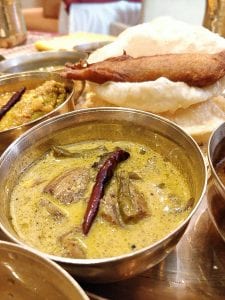
Chhechki
In conclusion, readers, let us talk about ‘chhechki’. The ‘chhechki’ is not as complex as ‘labra’, ‘ghonto’, ‘chocchori’; it is akin to a rather simple and innocent human being. In oil, the panch phoron or five spices as the world calls it is sautéed with dried red chilli tempering and you can also mix some sweet abuses for your family to make it more delicious. Fry the thinly sliced vegetables for a while. Please try and avoid adding any water. Even if you have to add any water, make sure it’s just enough to cook the vegetables or to prevent your curry from burning. Enjoy it with roti and your family. Remember, a well-cooked ‘chhechki’ is an art. It is a difficult job to maintain the balance of taste.
Well, we had a long and lovely discussion on the topic, dear readers. You must have taken notes. You must be wondering why I did not give any recipes or preparation methods for you. Let me reveal a secret to you, I don’t have the expertise to write down recipes. I do cook at home but I always eyeball my quantities. I strongly believe that in most Indian kitchens the spices are always eyeballed and the taste these spices provide cannot be measured in terms of five or ten grams. I might enjoy a spicy meal, while you don’t. I might have a sweet tooth, while you don’t. Instead of debating, we should acknowledge the variety of Bengali vegetable dish and their mutual differences based on cutting the vegetables into different shapes, tempering and consistency of the curry.
Please check the link for the first Bengali fine dining restaurant in India, here
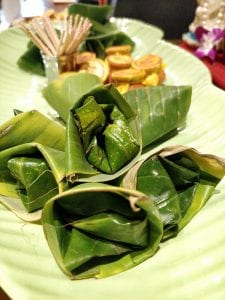
Classification of modern Bengali recipes into only potato-cauliflower or potato-pointed gourd is a grave mistake. The ‘Alu Posto’ is not the only star of the Bengali cuisine show. Each recipe is different in taste, texture, smell. Each dish is unique in its way. Now, among these vegetarian recipes, how much contributions have been made by the widows of Bengal due to their diet regimes, is a lengthy discussion for another day. Till then, cook these delicious dishes and feed your soul. You can invite me too if you wish, for a tasting of your homemade Bengali vegetable dish and I would be as happy as a clam.
Statutory warning:
The area of Bengali vegetable dish is a mystery and I am still learning the nuances of it. If you wish to add to this article, please post in the comments section for me to learn. And this post will be updated in future.
Bon appetit !!!
I can be reached at indrajit.lahiri@ymail.com

1 comment
Very nicely explained.. ei difference gulo jantum na..